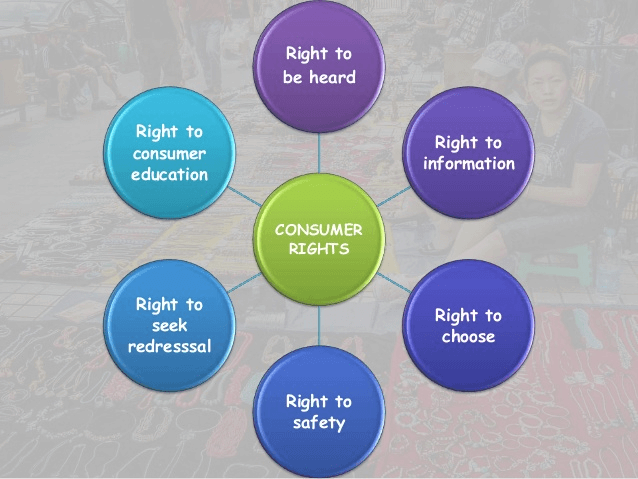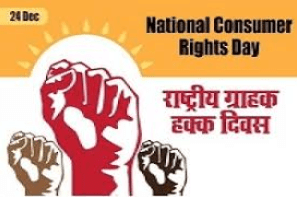Consumer Rights Chapter Notes - Class 10 PDF Download
CONSUMER RIGHTS
The consumer in the marketplace
Consumers participate in the marketplace by using a particular product. Had there been no consumer no company would exist. The status of consumer is more or less pathetic as far as consumer rights are concerned. You can take examples of shopkeepers weighing less than he should, company’ making false claims on packs.
Then there are local sweetmeat sellers adulterating raw materials to produce the laddoos or barfis. You can recall the case of dropsy because of adulterated mustard oil. No matter how bad quality you get, chances are you will get a rude response from the shopkeeper if you dare to complain.
If you have traveled by railways then you can recall the horrible taste of almost all foodstuffs being sold in trains and on platforms. Even the food supplied by the rail pantry is of horrible quality.

Consumer Movement in India:
In India, the consumer movement as a ‘social force’ originated with the necessity of protecting and promoting the interests of consumers against unethical and unfair trade practices.
Rampant food shortages, hoarding, black marketing, adulteration of food and edible oil gave birth to the consumer movement in an organized form in the 1960s. Till the 1970s, consumer organisations were largely engaged in writing articles and holding exhibitions.
They formed consumer groups to look into the malpractices in ration shops and overcrowding in the road passenger transport. More recently, India witnessed an upsurge in the number of consumer groups.
The consumer movement arose out of dissatisfaction of the consumers as many unfair practices were being indulged in by the sellers. There was no legal system available to consumers to protect them from exploitation in the marketplace.
For a long time, when a consumer was not happy with a particular brand product or shop, he or she generally avoided buying that brand product, or would stop purchasing from that shop. It was presumed that it was the responsibility of consumers to be careful while buying a commodity or service.
It took many years for organisations in India, and around the world, to create awareness among people. Because of all these efforts, the movement succeeded in bringing pressure on business firms as well as government to correct business conduct which may be unfair and against the interests of consumers at large.
A major step taken in 1986 by the Indian government was the enactment of the Consumer Protection Act 1986, popularly known as COPRA.
CONSUMER RIGHTS:

Right to Be Informed
As a consumer you have right to have correct information about a product. Government has made it mandatory to mention all ingredients and safety features on the pack of a product. This helps the consumer in making informed buying decision.
Consumers can then complain and ask for compensation or replacement if the product proves to be defective in any manner. For example, if we buy a product and find it defective well within the expiry period, we can ask for a replacement.
If the expiry period was not printed, the manufacturer would blame the shopkeeper and will not accept the responsibility. If people sell medicines that have expired severe action can be taken against them.
Similarly, one can protest and complain if someone sells a good at more than the printed price on the packet. This is indicated by ‘MRP’ — maximum retail price. In fact consumers can bargain with the seller to sell at less than the MRP.
In recent times, the right to information has been expanded to cover various services provided by the Government. In October 2005, the Government of India enacted a law, popularly known as RTI (Right to Information) Act, which ensures its citizens all the information about the functions of government departments.
Right to Choose
The consumer has right to choose a product. For example if you buy a soap which claims to give a free sachet of shampoo but you don’t want to take the shampoo then you have right to refuse that offer. In lieu of the company has to make available another pack which is not a combo pack.
There are many reports in newspaper of student getting compensation from professional colleges when they left the course midway because of any reason. Many students had to go to the consumer court to get a favorable decision.
Right to Seek Redressal
If you are victim of unfair trade practices of a company then you can go to the court for redressal of your grievances. Suppose you took a mobile connection and the bill shows many hidden charges which were not explained to you earlier. Or the mobile company activated a ringtone without your permission. Then you can go to the consumer court to put your case.
Consumer Forum:
The consumer movement in India has led to the formation of various organisations locally known as consumer forums or consumer protection councils. They guide consumers on how to file cases in the consumer court.
On many occasions, they also represent individual consumers in the consumer courts. These voluntary organisations also receive financial support from the government for creating awareness among the people.
If you are living in a residential colony, you might have noticed name boards of Resident Welfare Associations. If there is any unfair trade practice meted out to their members they take up the case on their behalf.
LEARNING TO BECOME WELL-INFORMED CONSUMERS:
When we as consumers become conscious of our rights, while purchasing various goods and services, we will be able to discriminate and make informed choices. This calls for acquiring the knowledge and skill to become a well-informed consumer.
How do we become conscious Under COPRA, a three-tier quasi judicial machinery at the district, state and national levels was set up for redressal of consumer disputes.
The district level court deals with the cases involving claims upto Rs 20 Lakhs , the state level courts between Rs 20 lakhs and Rs 1 crore and the national level court deals with cases involving claims exceeding Rs 1 crore.
If a case is dismissed in district level court, the consumer can also appeal in state and then in National level courts.
Thus, the Act has enabled us as consumers to have the right to represent in the consumer courts.
National Consumers’ Day
We celebrate December as the National Consumers’ Day. It was on this day that the Indian Parliament enacted the Consumer Protection Act in 1986. India is one of the countries that have exclusive courts for consumer redressal.
The consumer movement in India has made some progress in terms of numbers of organised groups and their activities. There are today more than 700 consumer groups in the country of which only about 20-25 are well organised and recognized for their work.
However, the consumer redressal process is becoming cumbersome, expensive and time consuming. Many a time, consumers are required to engage lawyers. These cases require time for filing and attending the court proceedings etc. In most purchases cash memos are not issued hence evidence is not easy to gather.
Moreover most purchases in the market are small retail sales. The existing laws also are not very clear on the issue of compensation to consumers injured by defective products. After 20 years of the enactment of COPRA, consumer awareness in India is spreading but slowly.
FAQs on Consumer Rights Chapter Notes - Class 10
| 1. What is the importance of Consumer Rights? |  |
| 2. What are the six consumer rights recognized by the Indian Government? |  |
| 3. How can consumers exercise their rights? |  |
| 4. What is the role of the Consumer Protection Act in India? |  |
| 5. What are some examples of consumer rights violations? |  |















